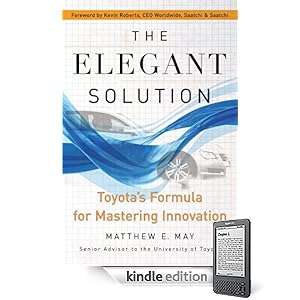 Jag älskar att läsa engelska naturvetenskapliga texter – speciellt från USA. Det gäller inte bara ”populärvetenskapliga” böcker, även kurslitteratur är betydligt bättre – både i upplägg och innehåll. Amerikanare vet hur man gör ett ämne intressant.
Jag älskar att läsa engelska naturvetenskapliga texter – speciellt från USA. Det gäller inte bara ”populärvetenskapliga” böcker, även kurslitteratur är betydligt bättre – både i upplägg och innehåll. Amerikanare vet hur man gör ett ämne intressant.
För ett tag sedan beställde jag hem Empires of Light – Edison, Tesla, Westinghouse and the race to electrify the world, skriven av Jill Jonnes (Amazon).
Boken är både en historisk återberättelse av det så kallade ”War of Currents” men innehåller samtidigt mycket lärorik beskrivning av Elkraft som vetenskap. Jag har ännu inte läst klart boken, i det närmaste bara börjat, men jag har redan funnit ett utdrag ur boken som jag känner belyser det som jag så gärna vill lyfta fram – att kunskap kan vara intressant, lärorikt och riktigt spännande.
_________________________________________________________________
Utdrag ur Empires of Light av Jill Jonnes eller:
Faraday, and how continuous current was ‘created’ through magnetism
Faraday had an iron ring. On one side he had wound a coil of insulated wire that was attached to a battery. On the other side of the ring he wound a second coil of insulated wire, and that was attached to a galvanometer, which measures small electric currents. When Faraday activated the battery to electrify the first coil, he looked hopefully for signs of life in the second coil but saw none. What did catch his eye was that the galvanometer registered a feeble and momentary current when the battery was attached or detached. Here was the first clue: A change in the charged coil’s magnetic field – starting and stopping it by activating the battery – briefly created current in the second wire coil. Faraday’s friend and colleague John Tyndall would later ponder Faraday’s genius and explain it thus:
“He united vast strength with perfect flexibility. His momentum was that of a river, which combines weight and directness with he ability to yield to the flexures of its bed. The intentness of his vision in any other direction did not apparently diminish his power of perception in other directions; and when he attacked a subject, expecting results different from those which he expected should not escape him through preoccupation.” […]
Over the next couple of months, as autumn brought the usual rain and gloom to London, Faraday found a day here and there to pursue these intriguing blips by the galvanometer. In his first experiment, he wound a coil of wire around a straight iron core. He took two long bar magnets and held them in a V and used the wrapped iron core as the third side of the triangle. When the V of the magnets was separated, breaking the magnetic circuit, current was induced in the coil. [Faraday noted] in his journal, “Hence, distinct conversion of Magnetism to Electricity.” To further test this, he took a pencil-shaped magnet and simply moved it in and out of coiled wire. The moving magnetic field created a brief current in the wire. But Faraday was interested in producing a continuous current, not just brief bursts.
So he set up a simple twelve-inch copper disk on an axle that revolved between the opposite poles of a permanent magnet. On one side of the copper disk, a wire ran from the axle to a galvanometer. Then another wire led from the galvanometer to a metallic conductor held against the rim of the copper disk. When the copper disk revolved, disturbing and thus changing the magnetic field of the magnet, the galvanometer registered a continuous electric current. [Faraday wrote] in his minutely detailed laboratory notebooks, “Here therefore was demonstrated the production of a permanent current of electricity by ordinary magnets.” Simply stated, Faraday’s law of electromagnetic induction says that an “electric current is set up in a closed circuit by a changing magnetic field.”

 Jag älskar att läsa engelska naturvetenskapliga texter – speciellt från USA. Det gäller inte bara ”populärvetenskapliga” böcker, även kurslitteratur är betydligt bättre – både i upplägg och innehåll. Amerikanare vet hur man gör ett ämne intressant.
Jag älskar att läsa engelska naturvetenskapliga texter – speciellt från USA. Det gäller inte bara ”populärvetenskapliga” böcker, även kurslitteratur är betydligt bättre – både i upplägg och innehåll. Amerikanare vet hur man gör ett ämne intressant. Kategorin Bokhyllan innehåller tankeväckande utdrag inte bara från facklitteratur men också från den skönlitterära världen.
Kategorin Bokhyllan innehåller tankeväckande utdrag inte bara från facklitteratur men också från den skönlitterära världen. Först ut är ett utdrag ur Matthew E. Mays bok The Elegant Solution (
Först ut är ett utdrag ur Matthew E. Mays bok The Elegant Solution (







